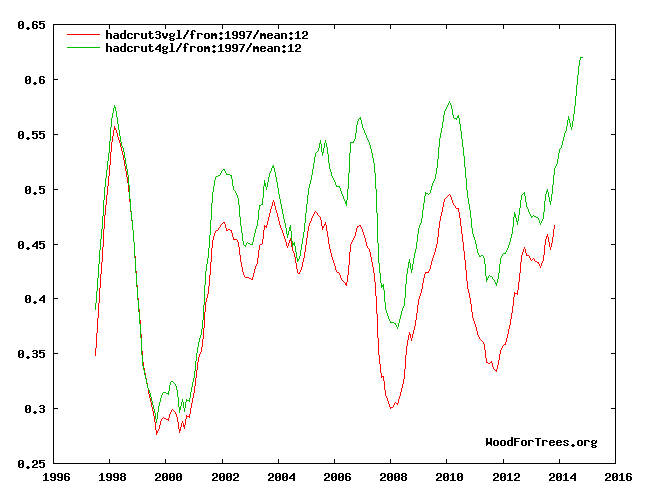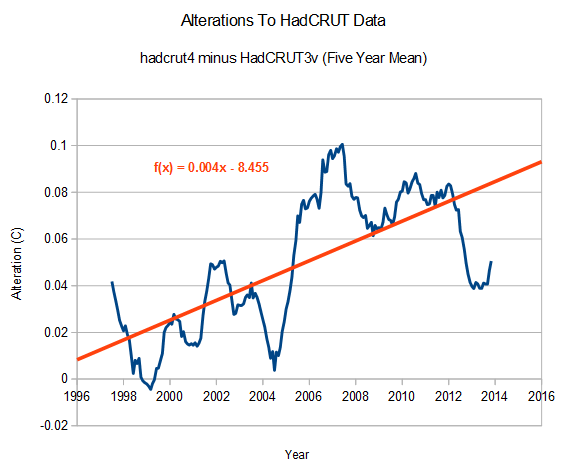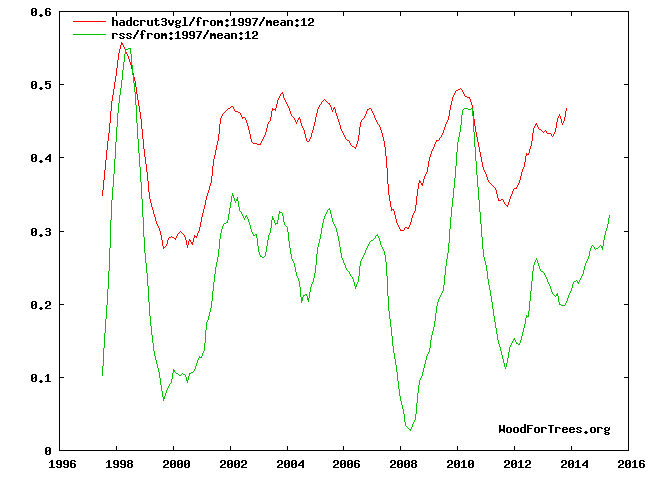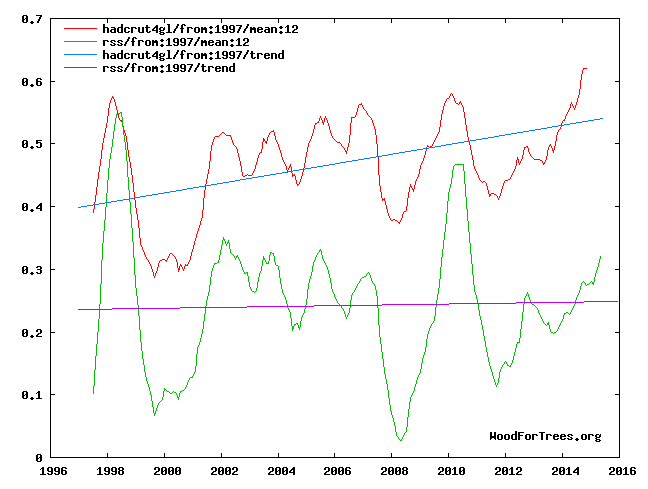The Climatic Research Unit at the University of East Anglia used to show the “hiatus” very clearly. Then they talked it over with their fellow fraudsters at NOAA and NASA – and made the hiatus disappear by switching to a new version of their data.
If you remove their recent 0.1 degree data tampering, then 1998 becomes the hottest year – which agrees with satellites.
Previously, CRU had excellent agreement with satellites about the hiatus. Satellites are supposed to show larger swings than surface data, but the trend was the same. Also note how satellite data shows much larger spikes during El Nino events, like 1998 and 2010.
The new CRU data creates a warming trend where there is none. But the real smoking gun of fraud is the divergence with satellites during the current El Nino. They should be converging, not diverging.






http://1.bp.blogspot.com/_tm33tTS2iZc/SxNNFIgLvQI/AAAAAAAABzs/N-IjnHyIM2o/s400/thumb_Cartoon_-_Climate_Science.png
They can play with their numbers and even scrub away their data but their words are forever!
http://theclimatescepticsparty.blogspot.com/2014/07/quotable-warming-hiatus-quotes.html
Dr. Phil Jones – CRU emails – 5th July, 2005
“The scientific community would come down on me in no uncertain terms if I said the world had cooled from 1998. OK it has but it is only 7 years of data and it isn’t statistically significant….”
Dr. Phil Jones – CRU emails – 7th May, 2009
‘Bottom line: the ‘no upward trend’ has to continue for a total of 15 years before we get worried.’
Dr. Phil Jones – BBC – 13th February 2010
[Q] B – “Do you agree that from 1995 to the present there has been no statistically-significant global warming”
[A] “Yes, but only just”.
The Climategate emails are worth a reread now and then.
Tony will love this one!
Climate gate e-mail 2729
And they claim two decimal places????
Climate gate e-mail 1650
Climate gate e-mail 0693
They claim two decimal places even after they ignore available data from high cold places (Bolivia) and substitute coastal Peru for the “missing” data.
In this case (Mann et. al.) they claim 2 decimal places with tree rings and fossil foraminifera!
The ‘Team’ was well aware that Mann’s hokey stick stunk. (And so was Mann)
Climate gate e-mail 3555
Reblogged this on Climate Collections.